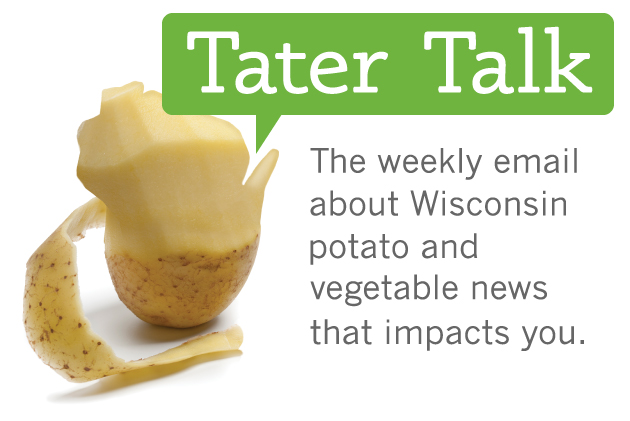Using Less Water to Grow More Food
Wisconsin’s Central Sands is a unique and bountiful place. Its rain-fed groundwater aquifer feeds one of the nation’s most productive potato and vegetable growing areas. The sandy glacial soils and easily accessible aquifer for irrigation allow Wisconsin to rank in the top three in green beans, peas, sweetcorn and potatoes, which contribute to our diverse and healthy agricultural economy. With an average annual rainfall of 32”, our aquifer is replenished yearly and the groundwater level remains constant, with minor fluctuations.
Ever mindful of the importance of a sustainable groundwater supply and how this resource has been depleted in other parts of the country, potato growers recently measured the depth to groundwater in over 50 irrigation wells in Portage county and found that all but 3 have groundwater at the same or higher levels compared to those recorded when they were first drilled over the last half century. This careful scrutiny is being expanded across the 6-county sands area to ensure that our groundwater is not at risk.
This same aquifer is also connected to and essential for the well-being of the many streams, lakes and wetlands that make the sands an ideal place to live. Wisconsin potato growers are at the forefront in managing these fragile ecosystems, and making sure they remain healthy during dry climate years, when the need for agricultural water use increases. The potato industry is sensitive to these concerns and is actively seeking new ways to irrigate their crops using less water. One logical approach is to increase productivity so that more food can be grown on fewer acres. Potatoes are a good example where this has been achieved. Over the past decade, innovations in production gained through improvements in varieties, fertility, soil health and pest management have allowed growers to produce 95% of the potatoes they did a decade ago but on 20% fewer acres, saving a whopping 25% of the water needed to grow potatoes!
Growers are now actively working with UW researchers to reduce water use still further. In the Department of Horticulture, a research group led by Mike Drilias, is looking at ways to induce crops to root deeper and use the water in the soil more efficiently. One method currently being studied is to simply apply less water to the crop (deficit irrigation) throughout the growing season and force the roots go deeper to find it. Mike has found that crops respond differently to such treatment. Potatoes differ by variety with some less affected while other varieties lose yield and, surprisingly, sweetcorn attained the same yields with 25% less water. Withholding water at specific growth stages (deferred irrigation) is another approach that is rapidly gaining acceptance by growers. Naturally deep-rooted crops such as soybeans, field corn and sweet corn, tend to ‘cheat’ when water is plentiful near the surface and develop shallow root systems but when water is withheld early in the season roots will go deeper and use water that would otherwise be lost. Such tactics can save growers over 2 inches of water on an acre of cropland—that’s 7 million gallons on a single field—without sacrificing yield.
An exciting new concept is also now being investigated that could prove critical in conserving water in irrigated agricultural systems. This takes advantage of the differential use of water by crops, which has been studied by UW departments of Horticulture, Soils, Agronomy and Biological Systems Engineering faculty and students. This differing need for water among crops opens the potential for designing future agricultural landscapes that can be profitable and yet use less water. Such landscapes have been evolving naturally, driven by economic and production considerations over the past 20 years. As potato acreage, (which requires 18 to 22 inches of total water throughout the growing season, including rainfall), has declined in response to greater productivity, the acreages of green beans (which need only 6.5 inches) and sweet corn (needing 12 inches) have increased to fill the gap, resulting in landscapes that actually use 25% less water. The potato and vegetable industry is actively supporting research in this area with the goal of designing landscape strategies to develop crop rotations in space and time to promote water conserving farmscapes.
For more information contact: wyman@ wisc.edu


